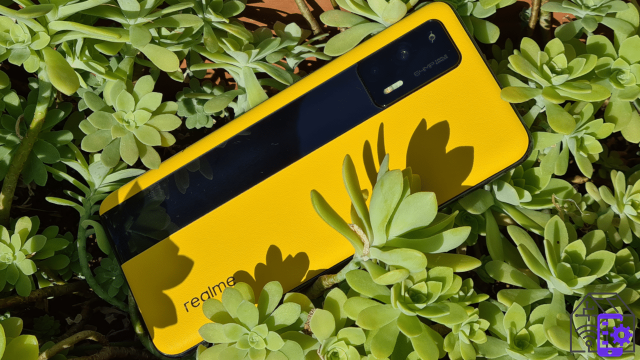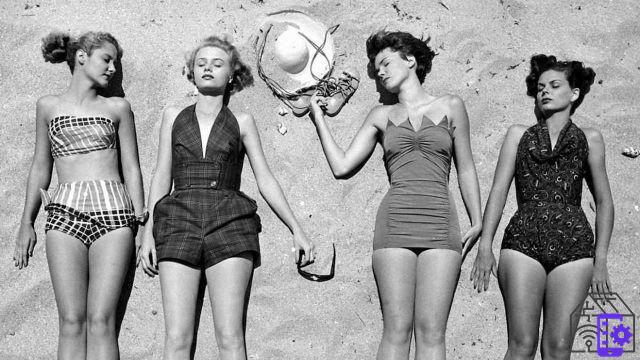
Today, July 5th, we celebrate a very important anniversary for our cultural history, as well as for that of fashion. In fact, we celebrate the 75 years of the bikini, one of the most revolutionary clothing ever. Precisely for this reason, we have decided to dedicate our column today to women's swimwear, which over the last century has undergone an evolution that is anything but irrelevant.
Bikini, the origin of a revolutionary garment
Although some testimonies show that the female swimsuit already existed at the time of Ancient Rome, the modern bikini was officially born on July 5 1946. A specific date, which is the day on which for the first time Michelle Bernardini - a nude dancer from the Casino de Paris - wore the garment designed by Louis Reard. The first real bikini of the modern era: a small and skimpy garment, designed by a French tailor with training as an automotive engineer. And this already makes it clear to you how strange the story of this extraordinary invention can be. But let's start from the beginning.
In 1940, Frenchman Louis Réard inherited a women's lingerie shop from his mother. An extravagant bequest for an engineer, were it not that he managed to turn this occasion into the best of his life - and that of millions of other women. Was struck by one of the most daring creations of the fashion designer Jacques Heim, who launched on the market "The smallest swimsuit in the world", Réard designed an even more minimal garment, so much so that also discovered the navel (a rarity for the time). A two-piece made up of four triangles of fabric bearing the print of a newspaper page.
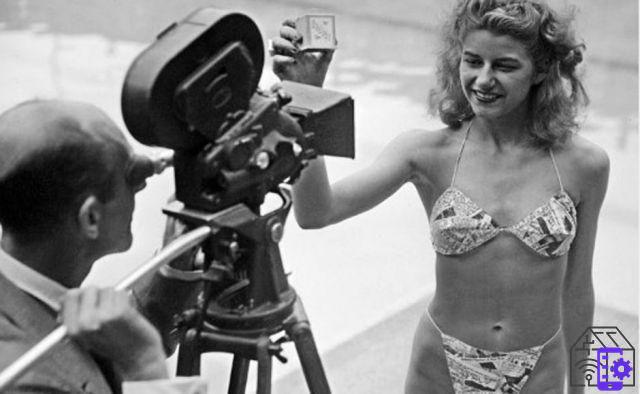

Yet another brilliant intuition of the French, who knew that the press would talk about his creation. Equally brilliant is the choice of the name "Bikini", which is inspired by an atoll in the Pacific - le Bikini Islands, precisely -, where the United States carried out nuclear tests to test the effects of the atomic explosion on military ships. And so, well convinced of his invention, the French chose this name because he believed that the costume would have had the same explosive effect in the society of the time.
On the other hand, it is certainly no coincidence that the only model Louis Réard found was nineteen-year-old Michelle Bernardini, a stripper who had no problem showing herself half-naked at the beauty contest at the Piscine Molitor in Paris. And, as you can imagine, the girl's bikini was met with tremendous success, especially since male audience. Not surprisingly, over 50 letters of congratulations reached the French tailor. And almost a hundred marriage proposals reserved for Bernardini. In short, a great success. As well as the beginning of a great story.
A fluctuating success
After Michelle Bernardini's presentation, the bikini was on everyone's lips. Yet the women of the XNUMXs had not yet found the courage to wear such a bold garment. Especially in Europe, where it was defined as "sinful" by the Vatican and even banned from Spain, Portugal, Italy and Belgium. And it was no less the United States, where in many countries it was banned at least until 1959. Yet, in the mid-1956s something began to change. Brigitte Bardot he cleared the use of the bikini by wearing one on the set of the film "And God created woman". And from that moment on, it was the movie stars who acted as spokespersons for the success of the garment invented by Louis Réard.
In the 1962, in fact, Ursula Andrews he sported a stunning two-piece in the movie "007 License to Kill". A total white costume that even boasts a page on Wikipedia, and which in 2001 was auctioned at a price of 61500 dollars. A garment that marked an era, and that convinced more and more women to give in to his charm. In the years that followed, the bathing suit began to appear everywhere: on the beaches, in billboards and even on the cover of Playboy. Réard's invention was no longer just a piece of clothing, but the symbol of an important rcultural and sexual revolution. And women loved wearing it for that too.
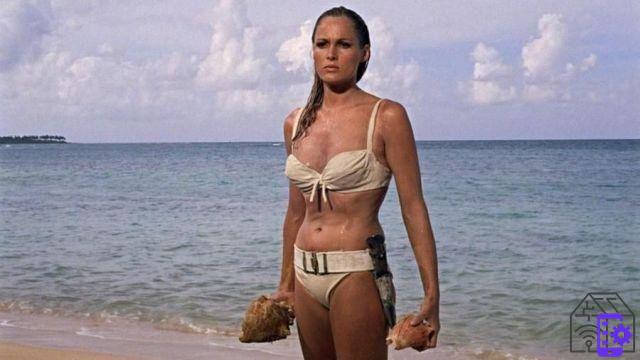
In fact, in 1965 Time declared that the 65% of girls they used to wear a bikini. An important fact, which marks not only the success of an item of clothing, but also an enormous achievement by the female gender. It should not be forgotten, in fact, that at the beginning of the twentieth century high penalties were still in force for women who showed a few more centimeters of uncovered skin. Therefore, the very possibility of being able to discover the navel was already to be considered an incredible achievement. And the movie stars' bikini was just the beginning of a long process that led women to uncover themselves more and more.
The (sexual) revolution of monokini
The sexual revolution had started quite a while now, and the feminist uprisings of the sixties / seventies made women feel more self-confident and more in control of their bodies. And it is precisely in the background of these events that the Austrian designer Rudy Gernreich, in 1964, draws his first monokini. A term conceived to indicate a one-piece costume with a very high waist, but cut just below the breast, thus leaving it uncovered. The first hint of that huge cultural revolution that would lead to topless.
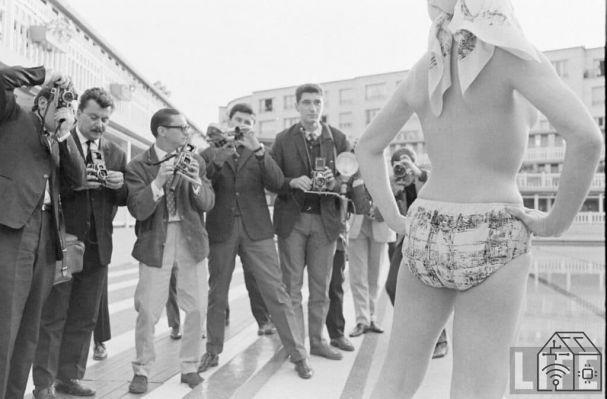
In fact, despite the fact that Gernreich's boss was not so successful from a commercial point of view, he was undoubtedly useful in carrying out the revolution that Réard began about 20 years earlier. Yet, just as happened to the French tailor, not even Gernreich could find a woman willing to wear his monokini. During the photo shoot organized in Montego Bay (Bahamas), all five hired models refused to wear the costume. So much so that the photographer asked a local prostitute to pose for the shots. Yet, despite this inconvenience, the designer decided to launch his personal reinterpretation of the bikini on the market.
In June 1964, the PR Manager of the Condor Nightclub in San Francisco he gave one of the girls at the club a monokini to wear for his show. And so, in just one night, Carol Doda became the first topless dancer in the whole of the United States. But she was followed by many others, in all the clubs on Broadway St. in San Francisco. So many to carry on a real one feminist revolution, cultural and sexual at the same time. And so, the monokini managed to reach the peak of its success in the seventies, albeit revisited also in more modern times by models of the caliber of Kate Moss and Laetitia Casta.
In short, we can also say that from its origin to today the bikini has not changed at all. After all, it is still two pieces of fabric that undergo only a few reinterpretations in terms of styles and colors. Yet what has really changed is what the women's swimwear stands for. There freedom to wear what you want. And also that of discovering a few more inches of skin. In short, the bikini is not just a costume. It is the symbol of a revolution. And today he truly deserves our heartfelt birthday wishes.
 ZAFUL Women's Padded Bikini Set, Bikini Swimsuit ...
ZAFUL Women's Padded Bikini Set, Bikini Swimsuit ...
- Material: nylon, spandex-elastic material, feels good on the skin and is comfortable to wear.
- Our Size: There are many sizes to choose from. Note: Please refer to the table of ...
- Padded bra. The top features triangular cups and ruffles for a sense of sweetness.
 Yutdeng Swimsuit Women 2 Pieces Bikini Sets Triangle ...
Yutdeng Swimsuit Women 2 Pieces Bikini Sets Triangle ...
- Package includes: 1 sexy bikini set.
- This bikini features a tie dye style top with a cute knot front. A print in the shape of a sunflower or a ...
- This bikini has simple yet unique design, offers great support and enhance shape, bring you more snug.







